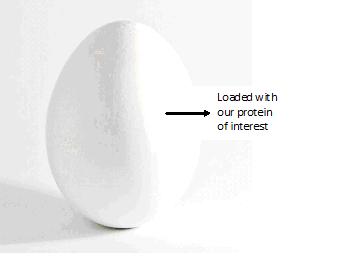Team:Imperial College London/M3
From 2009.igem.org
(→40pxModule 3 Overview) |
(→40pxModule 3 Overview) |
||
| Line 14: | Line 14: | ||
10th International Symposium on the Biosafety of Genetically Modified Organisms (GM Biosafety Symposium)<br> | 10th International Symposium on the Biosafety of Genetically Modified Organisms (GM Biosafety Symposium)<br> | ||
| - | |||
[[Image: II09_temp increase.jpg| right]] | [[Image: II09_temp increase.jpg| right]] | ||
| + | After Module 2 has been completed, genome deletion is triggered by raising the temperature. This is especially suitable since it is difficult for normal chemical induction to penetrate the colanic acid coating. <br>(see [[Team:Imperial_College_London/Temporal_Control/Thermoinduction| thermoinduction under temporal control]]) <br> | ||
| + | |||
The cell then produces the [[Team:Imperial_College_London/M1/RE| restriction enzymes]] DpnII and TaqI which specifically target and cut DNA sequences, in order to destroy all genetic material contained within the cell. <br> | The cell then produces the [[Team:Imperial_College_London/M1/RE| restriction enzymes]] DpnII and TaqI which specifically target and cut DNA sequences, in order to destroy all genetic material contained within the cell. <br> | ||
[[Image: II09_cut dna.jpg| center]] | [[Image: II09_cut dna.jpg| center]] | ||
Revision as of 22:34, 16 September 2009

 Module 3 Overview
Module 3 Overview
Module 3 is the final module of the system. This programs the E.ncapsulator to destroy its genetic material after encapsulation has finished. This prevents any possible pathogenic effects, and also allays health concerns of eating genetically modified organisms.
10th International Symposium on the Biosafety of Genetically Modified Organisms (GM Biosafety Symposium)
After Module 2 has been completed, genome deletion is triggered by raising the temperature. This is especially suitable since it is difficult for normal chemical induction to penetrate the colanic acid coating.
(see thermoinduction under temporal control)
The cell then produces the restriction enzymes DpnII and TaqI which specifically target and cut DNA sequences, in order to destroy all genetic material contained within the cell.
To protect against DNA destruction due to basal levels of restriction enzyme production, we have made use of the native E. coli Dam methylase protection system. This methylates DNA. Therefore, only high levels of restriction enzyme (ie. after thermal triggering) will cleave the DNA.
A distinct advantage of using restriction enzymes for our 'killing' mechanism is that the cell membrane is left intact afterwards, and the protein of interest will still be protected by the encapsulated cell. This renders the bacterium no more than an inanimate shell containing our protein drug of choice.
 "
"








